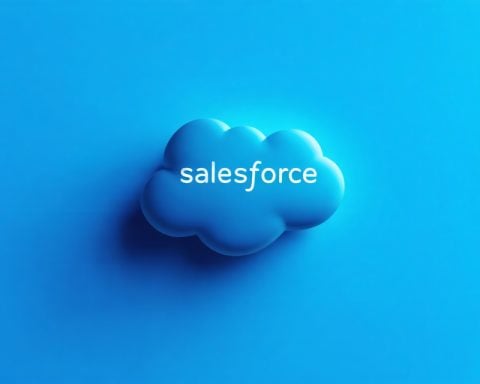- The beverage industry is rapidly adapting to meet consumer demand for healthier and more functional drinks, blending indulgence with wellness.
- Molson Coors Beverage Company exemplifies agility by shifting focus to better-for-you beverages that enhance energy, boost immunity, and support cognitive health.
- The no- and low-alcohol segments are thriving as health-conscious consumers seek alternatives without compromising taste or experience.
- Rising interest in non-alcoholic beer, wine, and spirits is driving significant sales growth, reflecting changing consumption patterns.
- Packaging challenges, such as potential tariffs on steel and aluminum, present hurdles but also opportunities for innovation.
- Molson Coors’ proactive adaptation to market trends positions it for long-term success, appealing to dividend-focused investors.
In the fast-paced world of consumer staples, few sectors are as dynamic as the beverage industry, where brands are sprinting to keep up with evolving consumer demands. Today’s shoppers are not just looking to quench their thirst but to enjoy drinks that blend indulgence with wellness. Amidst this backdrop, Molson Coors Beverage Company, a venerable powerhouse in the beverage landscape, stands out as a prime example of a company pivoting with agility.
The shift towards health-conscious consumption reshapes how companies approach product development. With the rise of better-for-you drinks, consumers are keenly interested in beverages that do more than hydrate—they enhance energy, boost immunity, and support cognitive health. This trend has propelled beverage companies to innovate tirelessly, melding flavor with function.
Amidst this change, the no- and low-alcohol categories are flourishing. Health-aware young consumers are reducing their alcohol intake, nudging major producers like Molson Coors to offer alternatives that don’t compromise on experience or taste. This strategic pivot is mirrored in strong sales figures—non-alcoholic beer, wine, and spirits are enjoying unprecedented growth, underscoring an appetite for such alternatives.
However, the industry faces hurdles, particularly around packaging. With the looming threat of tariffs on steel and aluminum imports, companies reliant on these materials—like those using aluminum cans—could see cost hikes, potentially disrupting the market. As adversity often begets innovation, this challenge may catalyze significant shifts in packaging strategies.
As global dividends in the beverage industry soar, players like Molson Coors that proactively adapt to market shifts appear poised for enduring success. By seamlessly integrating health trends and navigating economic challenges, Molson Coors remains well-positioned for continued growth, making it a compelling choice for dividend-focused investors looking to tap into the future of refreshment.
Unveiling the Future of the Beverage Industry: Health Trends, Innovations, and Challenges
1. How-To Steps & Life Hacks: Adapting to Beverage Trends
To thrive in the evolving beverage industry, companies can focus on the following strategies:
– Research Consumer Preferences: Conduct regular surveys and focus groups to understand the latest consumer preferences, particularly concerning health and wellness.
– Innovate with Ingredients: Explore functional ingredients that enhance energy, boost immunity, or support cognitive health. Think adaptogens, probiotics, and natural sweeteners.
– Experiment with Formulations: Create trial batches that combine new flavors and functional benefits. Use these trials to pivot based on consumer feedback.
– Monitor Alcohol Trends: Stay informed about the rise of no- and low-alcohol beverages and adjust product lines accordingly.
– Revitalize Packaging: With potential tariffs on aluminum, consider alternatives like compostable materials or innovative design elements that appeal to environmentally conscious consumers.
2. Real-World Use Cases and Consumer Success Stories
Brands like [Molson Coors](https://www.molsoncoors.com/) have shown remarkable agility by integrating these trends. For instance:
– Revitalizing Traditional Offerings: Molson Coors has developed non-alcoholic versions of its iconic beers, satisfying health-conscious consumers looking to reduce alcohol intake without sacrificing taste.
3. Market Forecasts & Industry Trends
The no- and low-alcohol sector is expected to grow significantly, with reports predicting the global market could reach $1.6 trillion by 2026 (source: GlobalData).
– Expected Growth: The market for health-boosting beverages is also projected to expand as consumers prioritize wellness. The incorporation of functional ingredients presents a lucrative opportunity for further gains.
4. Reviews & Comparisons
– Product Satisfaction: Consumers are showing high satisfaction with non-alcoholic beverages that do not compromise on taste, as evidenced by increased repeat purchases.
5. Controversies & Limitations
– Regulatory Hurdles: New formulations often face regulatory scrutiny related to ingredient safety and advertising claims, requiring thorough compliance research.
– Packaging Costs: Potential tariffs could inflate costs for companies dependent on aluminum, leading to potential price increases for end consumers.
6. Features, Specs & Pricing
Although no specific universal pricing exists, no- and low-alcohol products are generally priced similarly to their alcoholic counterparts, maintaining accessibility while supporting profit margins.
7. Security & Sustainability
– Eco-Friendly Initiatives: Molson Coors and others are exploring sustainable packaging to appeal to environmentally-conscious consumers, aligning with a growing demand for corporate responsibility.
8. Insights & Predictions
– Demand for Innovation: The industry might see increased mergers and collaborations aiming at innovation as companies race to capture new segments.
– Impact of Societal Shifts: As wellness becomes intrinsic to lifestyle, expect growth in diversified beverage categories, such as kombuchas or plant-based options with functional enhancements.
9. Pros & Cons Overview
– Pros: Increased demand for diverse, health-focused beverages creates unique market opportunities and drives product innovation.
– Cons: Packaging and regulatory challenges could create hurdles, necessitating efficient problem-solving strategies.
10. Conclusion: Actionable Recommendations
– Stay Agile: Constantly adapt to changing consumer preferences by implementing quick pivots and agile product development cycles.
– Embrace Sustainability: Focus on sustainable, innovative packaging to meet consumer expectations and mitigate raw material cost volatility.
– Keep Innovating: Leverage functional ingredients to appeal to health-focused consumers and capture emerging market segments.
By closely following these actionable strategies, beverage companies can effectively navigate the complexities of the industry while capitalizing on emergent trends. For more insights, explore [Molson Coors](https://www.molsoncoors.com/) for current initiatives and innovations in the beverage sector.



















